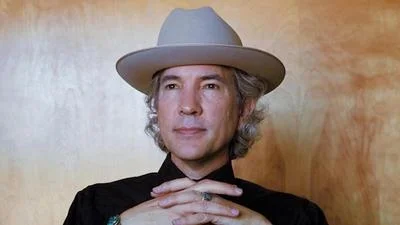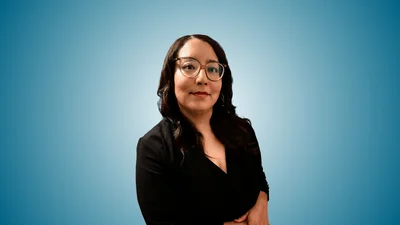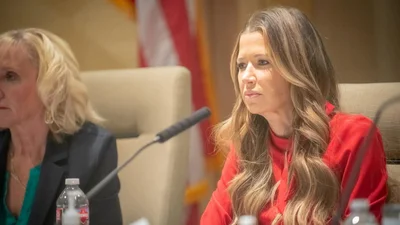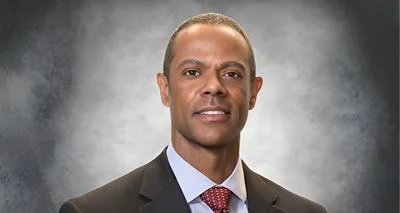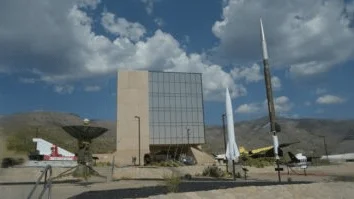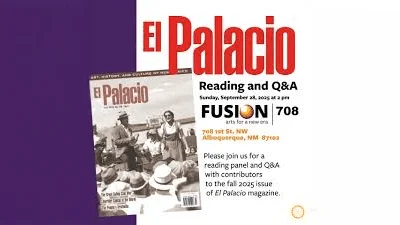A solo cello.
A candle-lined sanctuary.
Light peering through stained glass windows.
Four singers walk down an aisle, singing a meditative, harmonic song of praise.
So begins Liturgia, a themed flamenco program choreographed by José Maya, a Spanish dancer, singer, painter, and poet.
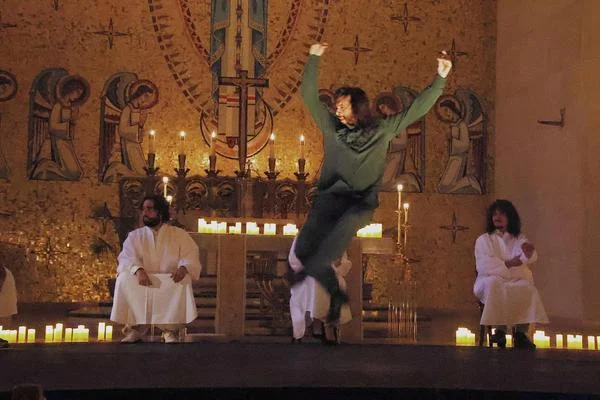 José Maya and singers. Photo: Thaïs Ferrandis Coy
José Maya and singers. Photo: Thaïs Ferrandis Coy
To say that Liturgia was profoundly beautiful, would be an understatement. It was sublime.
Part of Festival Flamenco Albuquerque’s thirty-eighth year, Liturgia was a reflection on the Andalucian-Christian experience, incorporating melismatic and chromatic modalities with Mozarabic and Gregorian chant, a style known as lo gitano, songs originating from medieval liturgical hymns.
Along with Maya were singers Sandra Carrasco, Jesús Corbacho, and Ismael de la Rosa ‘El Bola.’ Accompanied by José Luis ‘El Marqués’ on cello, the musicians provided a mesmerizing meeting, a confluence of music and movement, led Maya’s superb dancing.
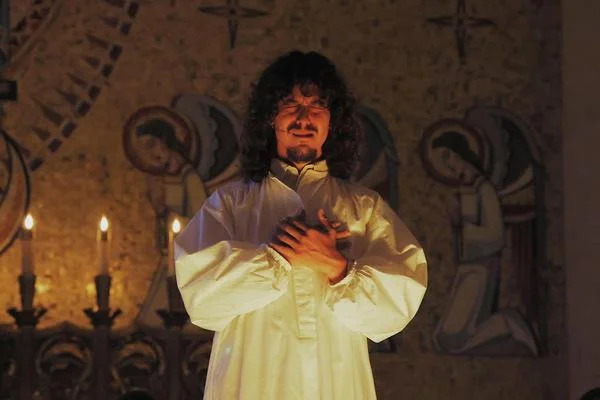 Jesús Corbacho. Photo: Thaïs Ferrandis Coy
Jesús Corbacho. Photo: Thaïs Ferrandis Coy
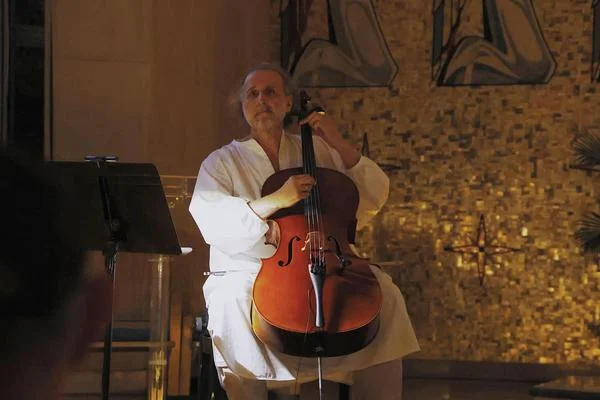 José Luis ‘El Marqués’. Photo: Thaïs Ferrandis Coy
José Luis ‘El Marqués’. Photo: Thaïs Ferrandis Coy
Performing at the Immaculate Conception Catholic Church in downtown Albuquerque, the packed sanctuary sat breathlessly still, watching the performance unfold. During a couple of pieces I looked around, seeing some people wipe tears from their eyes.
The program tells us that the tradition of Liturgia “evolved through the saeta (revered Andalusian hymns) progressing toward the toná (a bridge linking ancient musical traditions to flamenco), ultimately leading to the emergence of the seguiriya gitana.”
The history of the music—along with the harmonic reverberation in the church—conveyed a heavenly interplay, a tonal architecture of sheer enchantment.
But Albuquerque is not the only place that brings the church and flamenco together.
A priest in Spain, Father Jose Planas Moreno, uses Flamenco to bring people to his church, Nuestra Senora del Carman church in Campanilla.
According to journalist Fiona Govan, people are flocking to the congregation. She writes, “Unlike across the rest of Spain where the Catholic Church has struggled with falling numbers, the priest, who is known as Father Pepe, celebrates mass to a packed congregation with queues regularly forming outside his church.”
Govan quotes Father Pepe, “Something happens when I dance…It brings me closer to God.”
Imagine that: Dance can bring a person closer to God.
Philosopher, Nicholas Wolterstorff, in his book, Art in Action, writes concerning the purpose of art (dance included): "Art plays and is meant to play an enormous diversity of roles in human life. Works of art are instruments by which we perform such diverse acts as praising our great men and expressing our grief, evoking emotion and communicating knowledge. Works of art are objects of such actions as contemplation for the sake of delight… Works of art equip us for action...the purposes of art are the purposes of life."
I like that: "The purposes of art are the purposes of life."
As an artform, dance is something that gives meaning to existence, including the spiritual life. Through dance, one can express praise, contemplation, fears, hopes, and dreams, providing purpose and a platform for people to convey their existential crises or exclamatory exultations.
Dance is art in action, a significant part of our existence, representing both the earthly and eternal realms.
Experiencing the electrifying Flamenco program during Liturgia was testament that Flamenco leaves a lasting, otherworldly impression, bringing delight through dance, a feast for the forlorn.
Brian C. Nixon, Ph.D., is Chief Academic Officer and professor at Veritas International University in Albuquerque. As a writer, musician, and artist, his interests surround the philosophical transcendentals: truth, beauty, and goodness. You can contact Brian via his Bandcamp email address: https://briancharlesnixon.bandcamp.com

